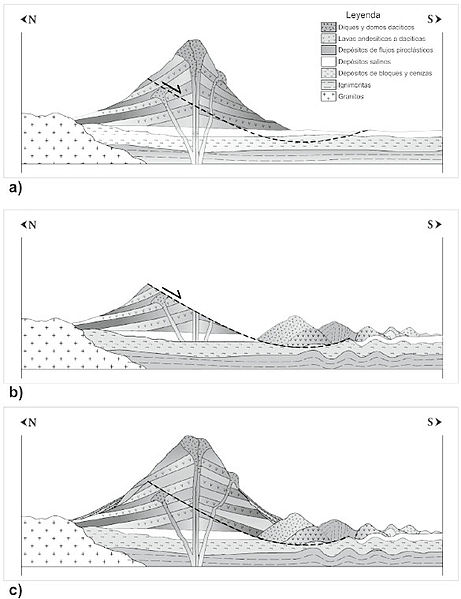A sector collapse or lateral collapse is the structural failure and subsequent collapse of part of a volcano. Unlike a flank collapse, a sector collapse involves the central volcanic pipe. Sector collapses are one of the most hazardous volcanic events, often resulting in lateral blasts, landslides, and changes in volcanic eruptive behavior. Sector collapse can be caused by earthquakes, volcanic eruptions, gradual volcanic deformation, and other processes. Sector collapse events can occur on volcanoes at convergent and divergent plate boundaries. Sector collapses are generally very sudden; however, some attempts have been made to predict collapse events.
Sector collapse during the 1980 eruption of Mount St. Helens
Sector collapse process
Mudflow-induced property damage caused by the 1980 Mount St. Helens sector collapse
Debris avalanche deposit of Tata Sabaya volcano's sector collapse
A volcano is a rupture in the crust of a planetary-mass object, such as Earth, that allows hot lava, volcanic ash, and gases to escape from a magma chamber below the surface.
Sabancaya volcano erupting, Peru in 2017
Lakagigar fissure vent in Iceland, the source of the major world climate alteration of 1783–84, has a chain of volcanic cones along its length.
Skjaldbreiður, a shield volcano whose name means "broad shield"
Izalco volcano, the youngest volcano in El Salvador. Izalco erupted almost continuously from 1770 (when it formed) to 1958, earning it the nickname of "Lighthouse of the Pacific".








